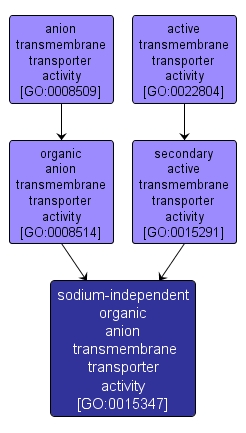GO TERM SUMMARY
|
| Name: |
sodium-independent organic anion transmembrane transporter activity |
| Acc: |
GO:0015347 |
| Aspect: |
Molecular Function |
| Desc: |
Catalysis of the transfer of organic anions from one side of a membrane to the other, in a sodium independent manner. |
|

|
INTERACTIVE GO GRAPH
|














